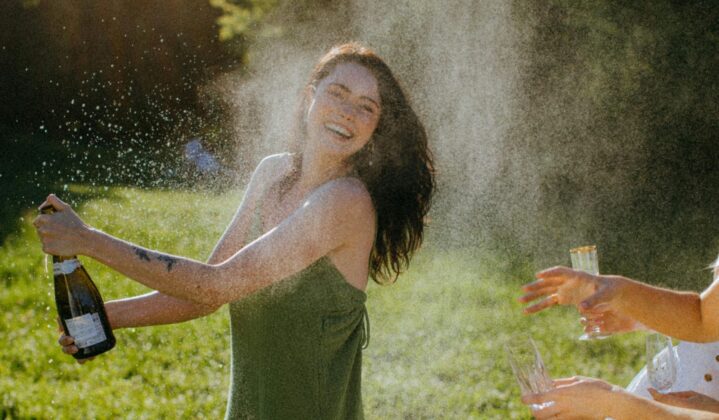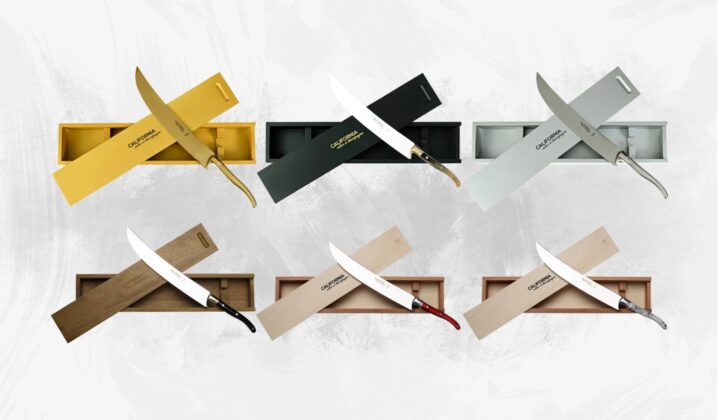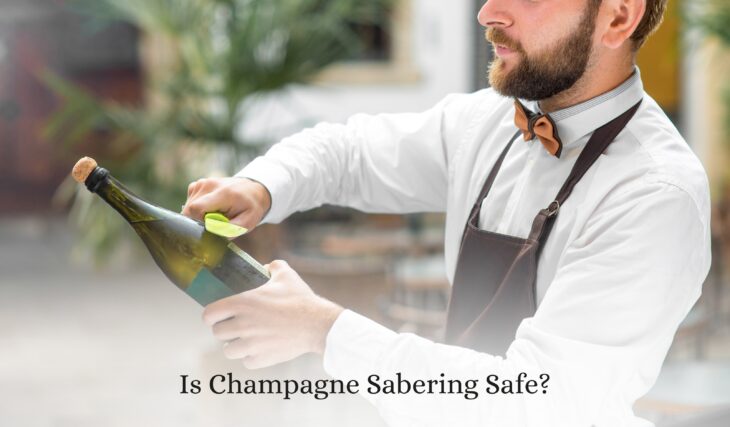Is Champagne Sabering Safe? Tips for Avoiding Injuries
The allure of champagne sabering lies in its ability to make an ordinary moment unforgettable. There’s a rush of excitement as the saber glides along the bottle, culminating in an explosion of bubbles and applause. Yet, behind the drama lies the reality: sabering, while exhilarating, is not without its risks.
So, is champagne sabering safe? Yes, when performed correctly with proper preparation and precautions, it can be both safe and spectacular.
Safety isn’t just about avoiding injury—it’s about preserving the magic of the moment. When done correctly, sabering becomes an elegant performance. But every elegant act requires preparation, care, and a healthy respect for the process. Here, we’ll share advanced insights and emotional context to help you saber confidently and safely.
Understanding the Art of Champagne Sabering
Champagne bottles are pressurized to around 90 psi, nearly three times the pressure in a car tire. This pressure makes sabering possible—but also makes it dangerous if mishandled. While the saber forces the cork out, the bottle’s internal pressure does much of the work. Understanding this balance of force and fragility is key to avoiding accidents.
A lesser-known factor is how bottle imperfections contribute to mishaps. Microfractures, caused by transportation or prolonged storage, can weaken the glass. These flaws may not be visible but can cause the bottle to shatter unexpectedly during a saber attempt. Taking the time to inspect your bottle—especially vintage or decorative ones—reduces these risks.
Beyond the Basics: Advanced Safety Tips
 Most resources emphasize standard precautions like chilling the bottle and finding the seam. Let’s delve into lesser-known strategies to elevate both safety and technique.
Most resources emphasize standard precautions like chilling the bottle and finding the seam. Let’s delve into lesser-known strategies to elevate both safety and technique.
1. Recognize the Role of Temperature Fluctuations
While chilling your bottle to around 45°F is essential, extreme cold can backfire. Overchilled bottles may become brittle, increasing the likelihood of glass breakage. Conversely, bottles left too warm build excess pressure, making the cork unpredictable. Invest in a reliable wine thermometer to ensure the ideal range for sabering.
2. Understand the Impact of Bottle Shape
Not all bottles are created equal. Champagne bottles with thicker glass and pronounced punts (the concave bottom) are safer for sabering. Avoid using bottles with flat bases or unique shapes, as their structural design may not support the pressure dynamics of sabering.
3. Perfect Your Grip and Saber Technique
Hand placement is critical but often overlooked. Instead of gripping the neck too tightly, use a steady, balanced hold that allows the bottle to absorb the saber’s momentum. As for the saber, it’s not about sharpness—it’s about a smooth stroke. A blunt edge, designed for sabering, ensures the cork dislodges cleanly without shattering the glass.
Creating a Safe Environment for Sabering
 Your surroundings are as important as your technique.
Your surroundings are as important as your technique.
Designate a Controlled Sabering Zone
Set up in a well-lit, open area free from distractions and clutter. Outdoors is preferable, but if indoors, ensure you have a clear path for the cork’s trajectory—away from people, pets, and fragile objects. Keep bystanders at least 10 feet away from the bottle and saber.
Use a Safety Barrier for Practice
If you’re a beginner, practice using a towel or protective glass barrier over the bottle. These tools help contain potential breakage while you refine your stroke. Over time, you can transition to full visibility once confidence builds.
Anticipate the Unexpected
Every sabering setup should include essential safety items: a first aid kit, heavy-duty gloves for handling glass, and a broom or vacuum to clean up shards. These precautions may seem excessive but can save you stress if something goes awry.
The Psychology of Sabering: Building Confidence
Sabering isn’t purely physical; it’s also a mental exercise. Fear of failure often leads to hesitation, increasing the risk of accidents. Counter this by mentally rehearsing the motion. Visualize the saber gliding along the bottle’s seam in one fluid motion. When the moment arrives, your brain will feel as if it’s already succeeded, steadying your hand.
Approach sabering with intention rather than as a party trick. Treat it as a celebration of craft and tradition. This shift in mindset not only improves safety but also enhances the emotional connection to the act itself.
Myths That Compromise Safety
Even experienced sabreurs fall victim to common myths. Let’s debunk a few that could lead to injury.
“Any Saber Will Do”
Not all sabers are designed for champagne sabering. Using sharp knives or heavy objects can cause the bottle to shatter dangerously. Champagne sabers have blunt edges and are engineered to follow the bottle’s seam without exerting unnecessary force.
“Sabering Requires Brute Strength”
Force is rarely the answer in sabering. Precision, not power, is what creates a clean break. Applying excessive pressure often causes the glass to splinter instead of allowing the cork to release smoothly.
“Every Bottle Is Saber-Friendly”
Decorative bottles or those made from recycled glass can behave unpredictably under pressure. Always use bottles designed for sparkling wines to ensure safety and consistency.
Interested in fascinating facts about champagne sabers? Learn about the craftsmanship and legacy behind these iconic tools.
Mastering Advanced Techniques
Once you’ve mastered the basics, consider refining your craft with advanced techniques.
Silent Sabering for Experts
Silent sabering—removing the cork with minimal noise—is a true mark of mastery. Achieving this requires exceptional control of the saber’s speed and angle, ensuring the cork slides out gently without disrupting the glass.
Multi-Bottle Sabering
For seasoned sabreurs, sabering multiple bottles in succession can be a thrilling challenge. This technique involves careful preparation and an unwavering focus on consistency. It’s a spectacle best performed in professional or highly controlled environments.
What to Do When Things Go Wrong
Even with preparation, accidents can happen. Knowing how to respond can prevent minor mishaps from escalating.
1. If the Bottle Doesn’t Saber
Stop after two failed attempts. Continuing to strike the bottle increases internal pressure and risks shattering. Inspect the bottle for cracks, chill it further, and ensure the saber’s path aligns perfectly with the seam before trying again.
2. Dealing with Broken Glass
If the bottle breaks, prioritize safety. Use gloves to handle shards and dispose of them in a secure container. To ensure no glass has entered the champagne, strain it into another vessel before serving.
Alternatives to Sabering
For those who find sabering intimidating, there are safer ways to add flair to a champagne toast.
Professional Workshops
Attend a sabering workshop led by a sommelier or experienced professional. These sessions offer hands-on guidance and allow you to practice in a controlled environment.
Ceremonial Tools
If a saber feels too daunting, consider ceremonial accessories like custom champagne openers or gold-plated bottle openers. These tools add sophistication to your celebration without the risks associated with sabering.
The Emotional Side of Sabering
 Why do we saber? For many, it’s more than a tradition—it’s a statement. Sabering encapsulates the joy, excitement, and anticipation of celebration. By approaching it with care, you honor not only the ritual but the people sharing the moment with you.
Why do we saber? For many, it’s more than a tradition—it’s a statement. Sabering encapsulates the joy, excitement, and anticipation of celebration. By approaching it with care, you honor not only the ritual but the people sharing the moment with you.
Every successful saber strike is a testament to preparation, skill, and respect for the craft. The satisfaction of seeing the cork fly and the champagne flow is a reward in itself, made all the sweeter by knowing you’ve done it safely.
A Celebration Worth Remembering
Champagne sabering, when done right, is a beautiful fusion of art and precision. It’s not merely about uncorking a bottle but about elevating the occasion with grace and care. Safety doesn’t diminish the thrill—it amplifies it, ensuring that every strike of the saber is met with smiles, not accidents.
At California Champagne Sabers, we celebrate the artistry of sabering by offering high-quality tools designed to enhance your experience while prioritizing safety and elegance. As you master the craft, remember that sabering is as much about the journey as the destination. With preparation, mindfulness, and respect for the process, you can create unforgettable celebrations that leave only memories—not mishaps—in their wake.
Frequently Asked Questions
What Is the Point of Sabering Champagne?
Sabering champagne is about creating a memorable and dramatic moment during a celebration. Originating as a tradition among French cavalry officers, it has since become a symbol of elegance and excitement. The act of sabering adds flair to any occasion, making it more festive and extraordinary. Beyond its aesthetic appeal, sabering also pays homage to history and transforms the simple act of opening a bottle into an unforgettable ritual.
Does Sabering Champagne Leave Glass Shards?
When done correctly, sabering does not leave glass shards in the champagne. The internal pressure of the bottle, which is around 90 psi, ensures that the cork and any potential fragments are expelled outward. This is why using the proper technique is crucial: a clean, precise strike along the bottle’s seam ensures that the glass breaks evenly at the neck. However, it’s always wise to inspect the bottle’s opening after sabering to confirm that no debris remains before pouring.
Is It Safe to Drink Opened Champagne?
Yes, champagne that has been sabered is safe to drink, provided that the bottle and its contents are inspected after opening. A quick visual check ensures that no glass shards or cracks have compromised the integrity of the bottle. Pouring the champagne carefully into a glass can also help you verify its clarity. If the sabering was performed correctly, the champagne should remain pristine, bubbly, and ready to enjoy.
Is it safe to drink from a cracked glass bottle?
No, it is not safe to drink from a cracked glass bottle. A crack compromises the structural integrity of the bottle, increasing the risk of it breaking completely, which could lead to injury or contamination of the liquid with glass shards. Even if the crack appears small or superficial, it may worsen under pressure or handling. It’s best to transfer the contents to a secure, intact container before consuming to ensure safety.
How to Properly Saber a Champagne Bottle?
Properly sabering a champagne bottle requires preparation and precision. Start by chilling the bottle to approximately 45°F, as colder champagne reduces the pressure inside and makes the bottle more stable. Remove the foil and loosen the wire cage, keeping it secured around the cork to prevent any premature popping. Locate the seam of the bottle, which is the weak point where the glass halves were fused during manufacturing. Hold the bottle at a 45-degree angle, away from people and fragile objects, and slide the saber firmly and smoothly along the seam toward the lip. The cork and neck should detach cleanly with a satisfying pop, leaving you with an open bottle ready to serve.
By following these steps and understanding the art of sabering, you can safely enjoy the magic and excitement it brings to any celebration.
